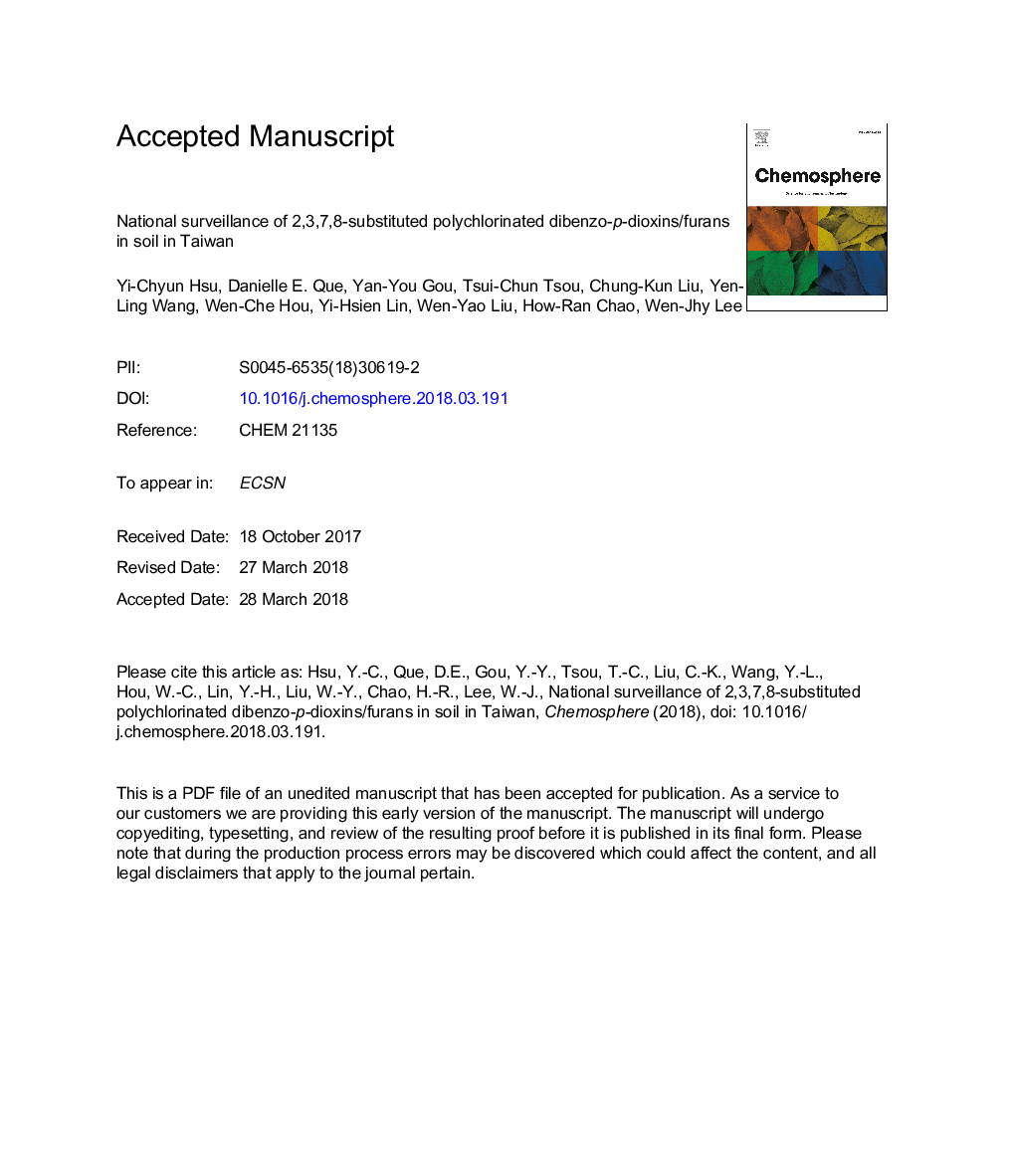| Article ID | Journal | Published Year | Pages | File Type |
|---|---|---|---|---|
| 8851210 | Chemosphere | 2018 | 37 Pages |
Abstract
In this study, the polychlorinated dibenzo-p-dioxin/furan (PCDD/F) levels in 381 soil samples coming from different background areas (nâ¯=â¯238) and contaminated areas (nâ¯=â¯143) in Taiwan were investigated from 2011 to 2015 using high resolution gas chromatograph/high resolution mass spectrometry (HRGC/HRMS). The contaminated areas showed higher PCDD/F contamination as compared to the background areas (1230 vs 749â¯pg/g dry weight (dw)); 14.0 vs 6.25â¯pg WHO2005-TEQ/g dw). The lowest levels were recorded in the outlying islands (1.28â¯pg WHO2005-TEQ/g dw). PCDD/F congener distribution profiles in the background and contaminated areas as well as on the islands varied. OCDD was the dominant congener in almost all locations, including the northern background (87.7%) and central contaminated (74.2%) areas. Other dominant species included OCDF and 1,2,3,4,6,7,8-HpCDD. Levels of PCDD/F-TEQs in Taiwanese soils, including the background areas, were higher than in some developing countries and regions with global background levels due to high industrialization except for the contaminated areas. Geographic differences in dioxin-contaminated soils were also shown in this study. Higher soil dioxin-TEQs were observed in locations with high populations and population densities. Despite the limitations, the economic status of Taiwan represented by the annual averaged family income (AAFI) was positively correlated to soil dioxin-TEQs.
Related Topics
Life Sciences
Environmental Science
Environmental Chemistry
Authors
Yi-Chyun Hsu, Danielle E. Que, Yan-You Gou, Tsui-Chun Tsou, Chung-Kun Liu, Yen-Ling Wang, Wen-Che Hou, Yi-Hsien Lin, Wen-Yao Liu, How-Ran Chao, Wen-Jhy Lee,
